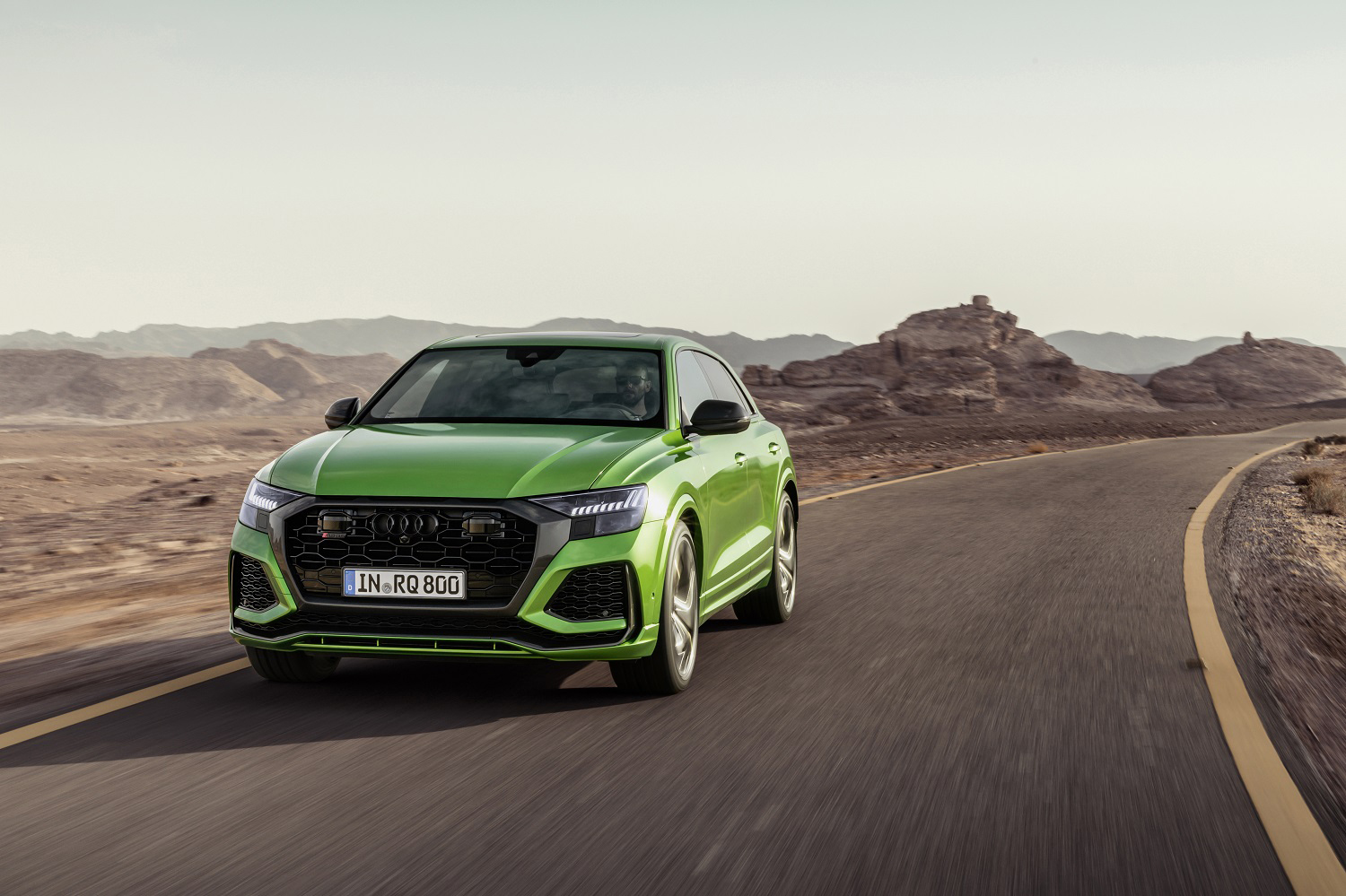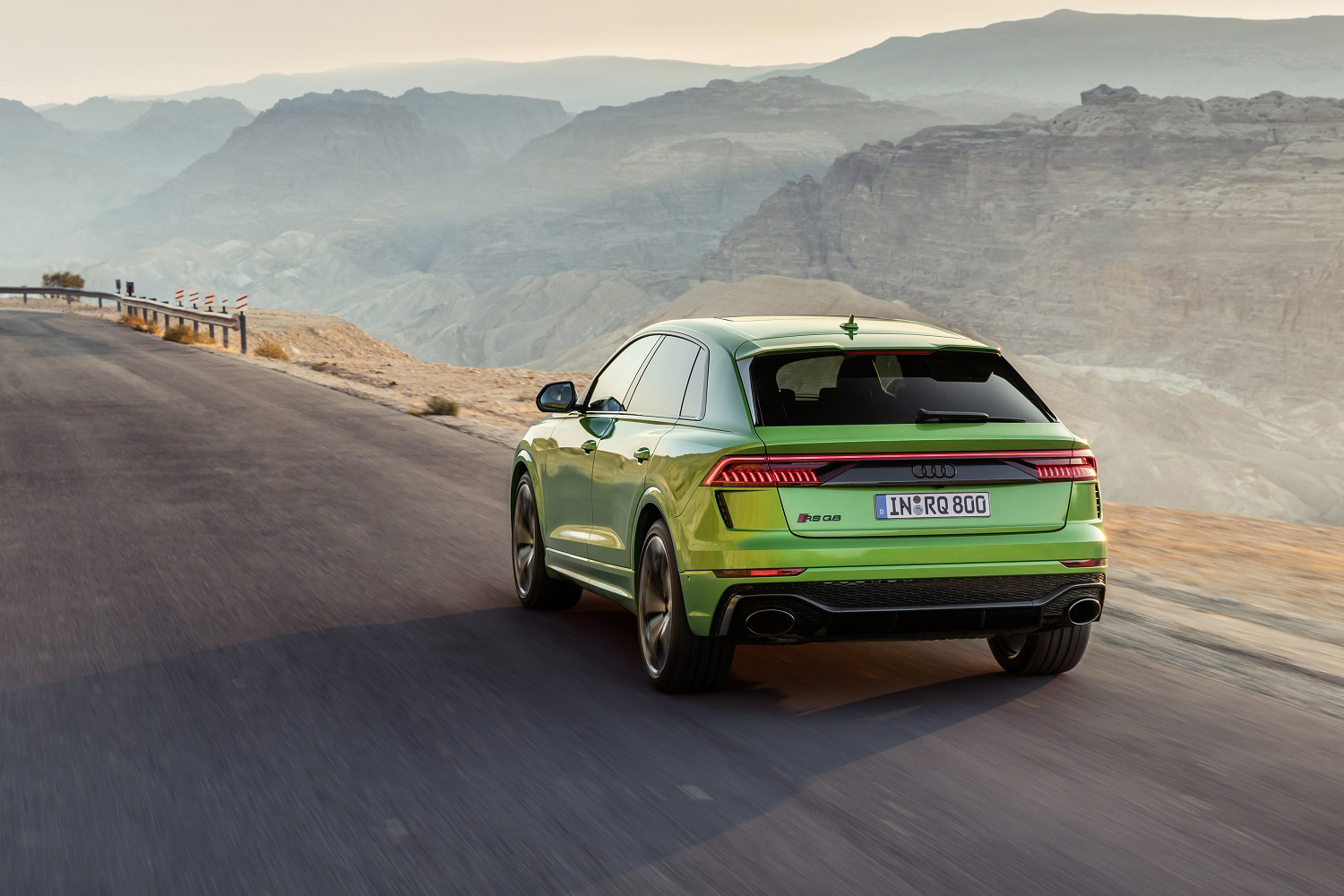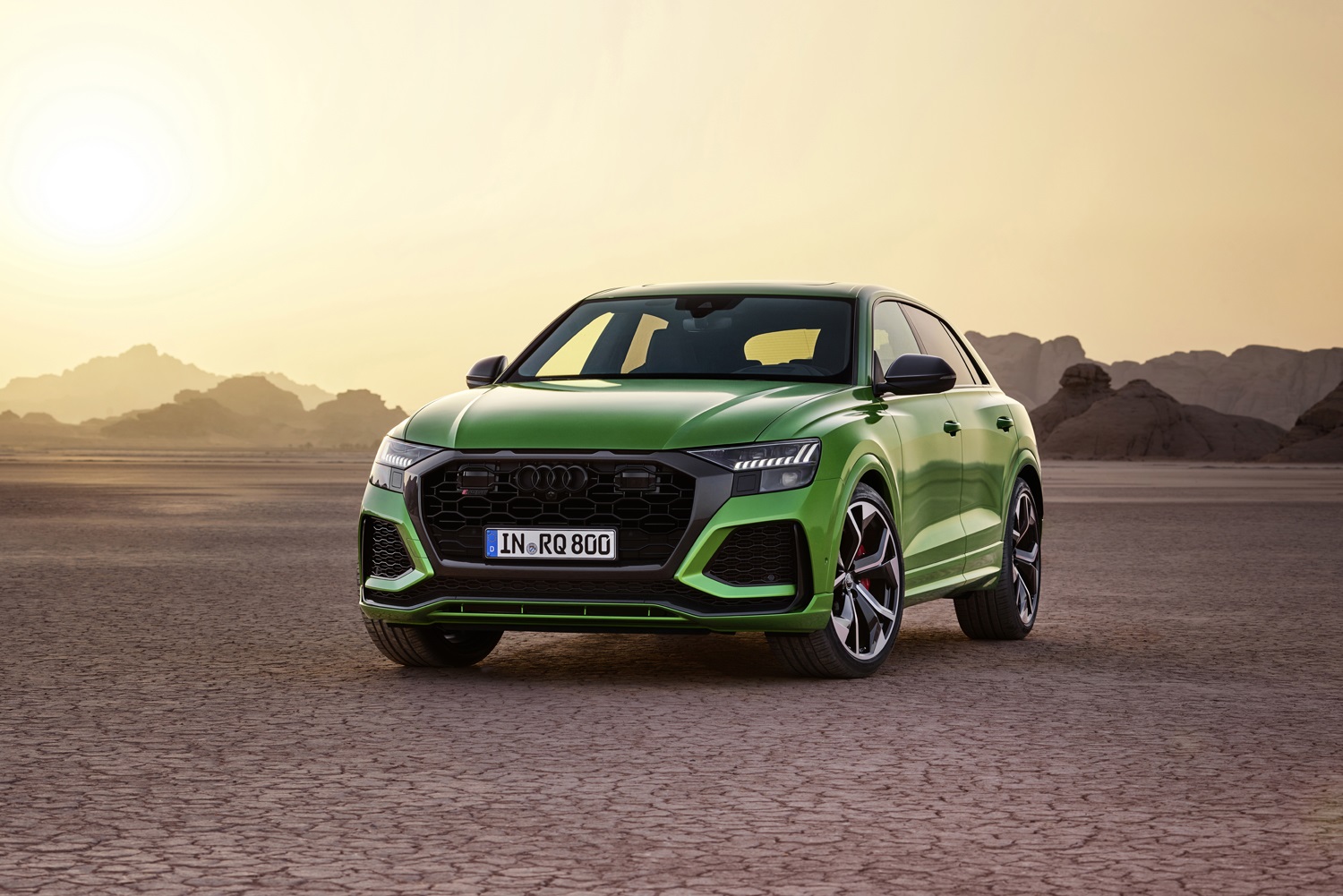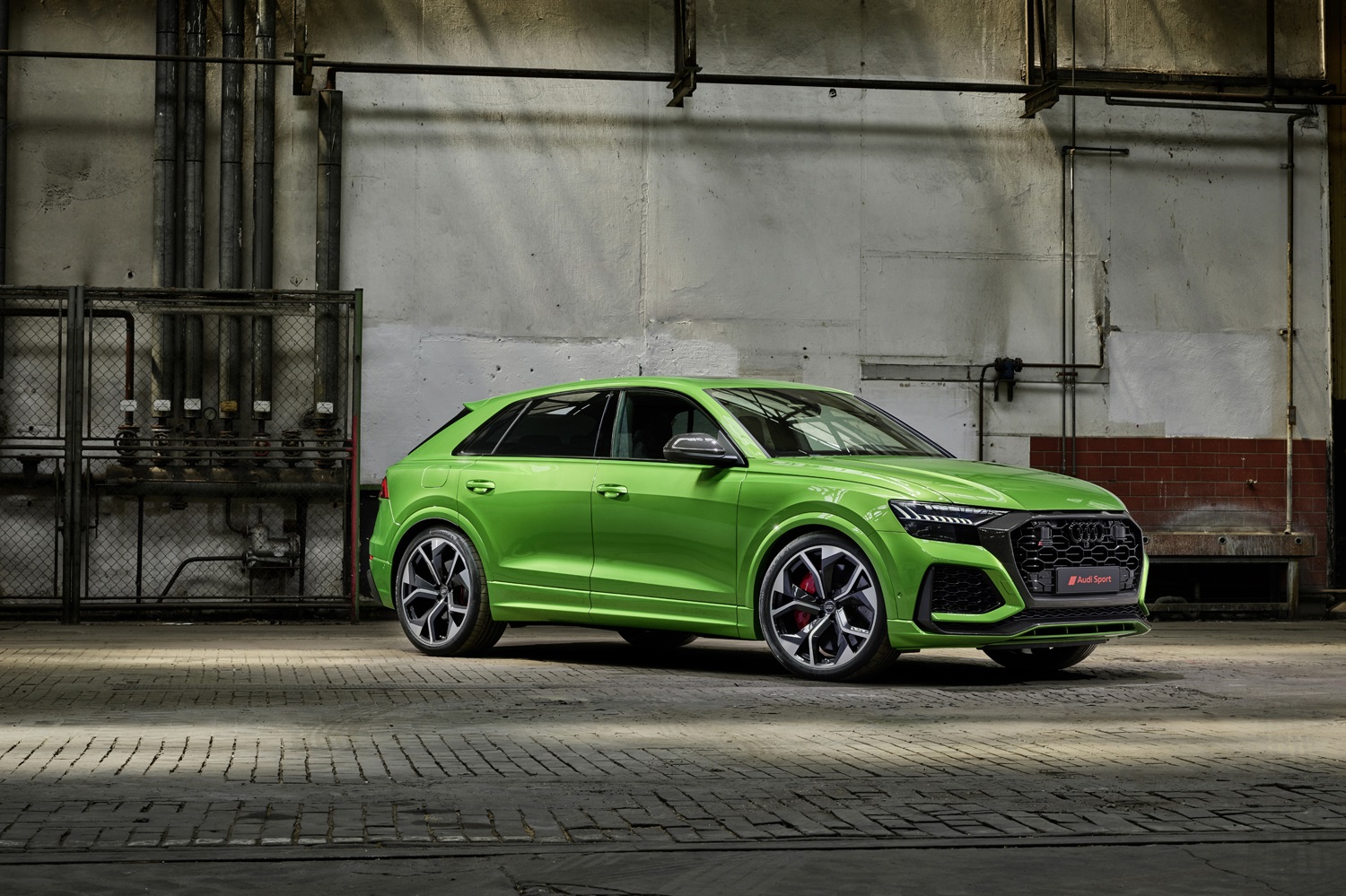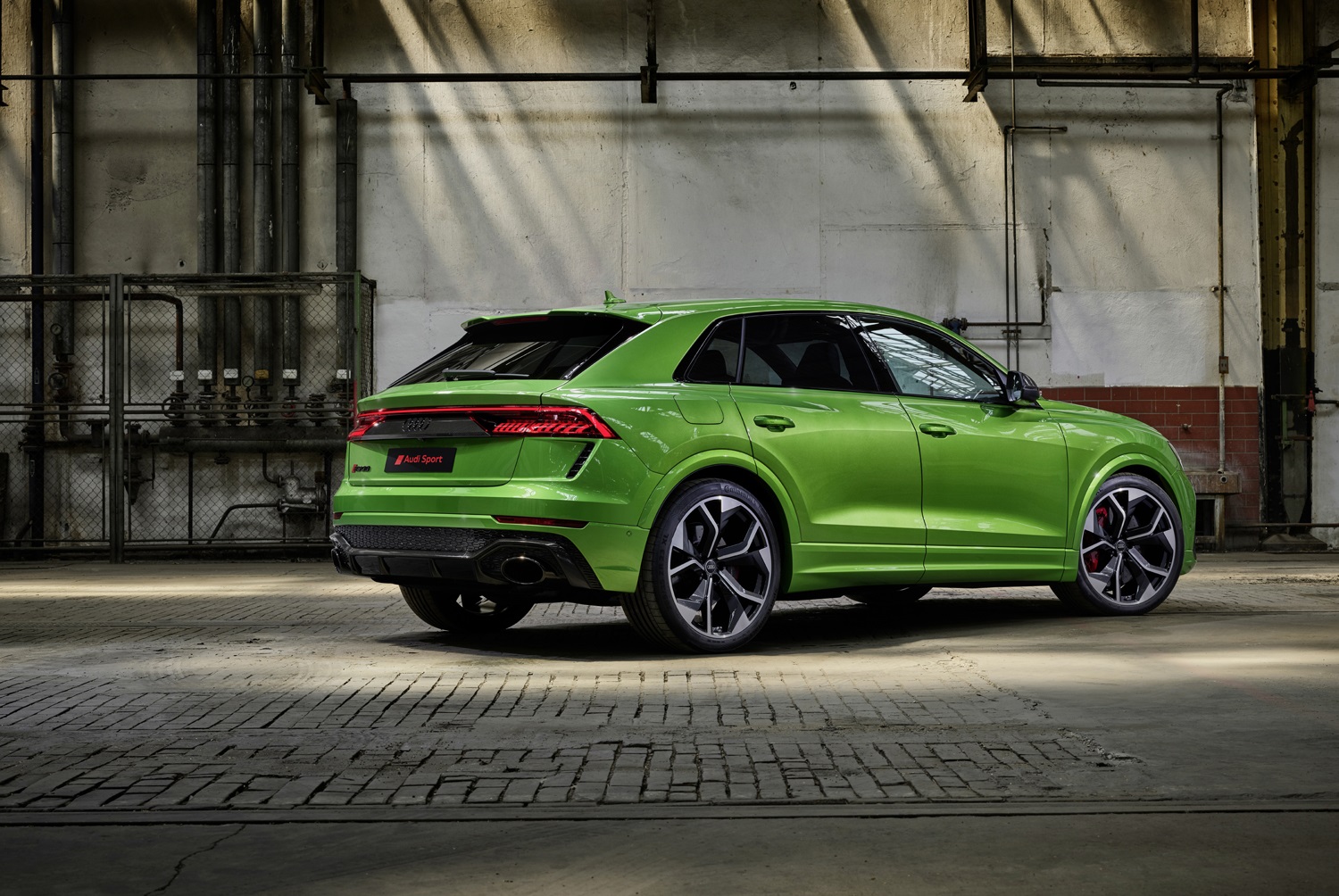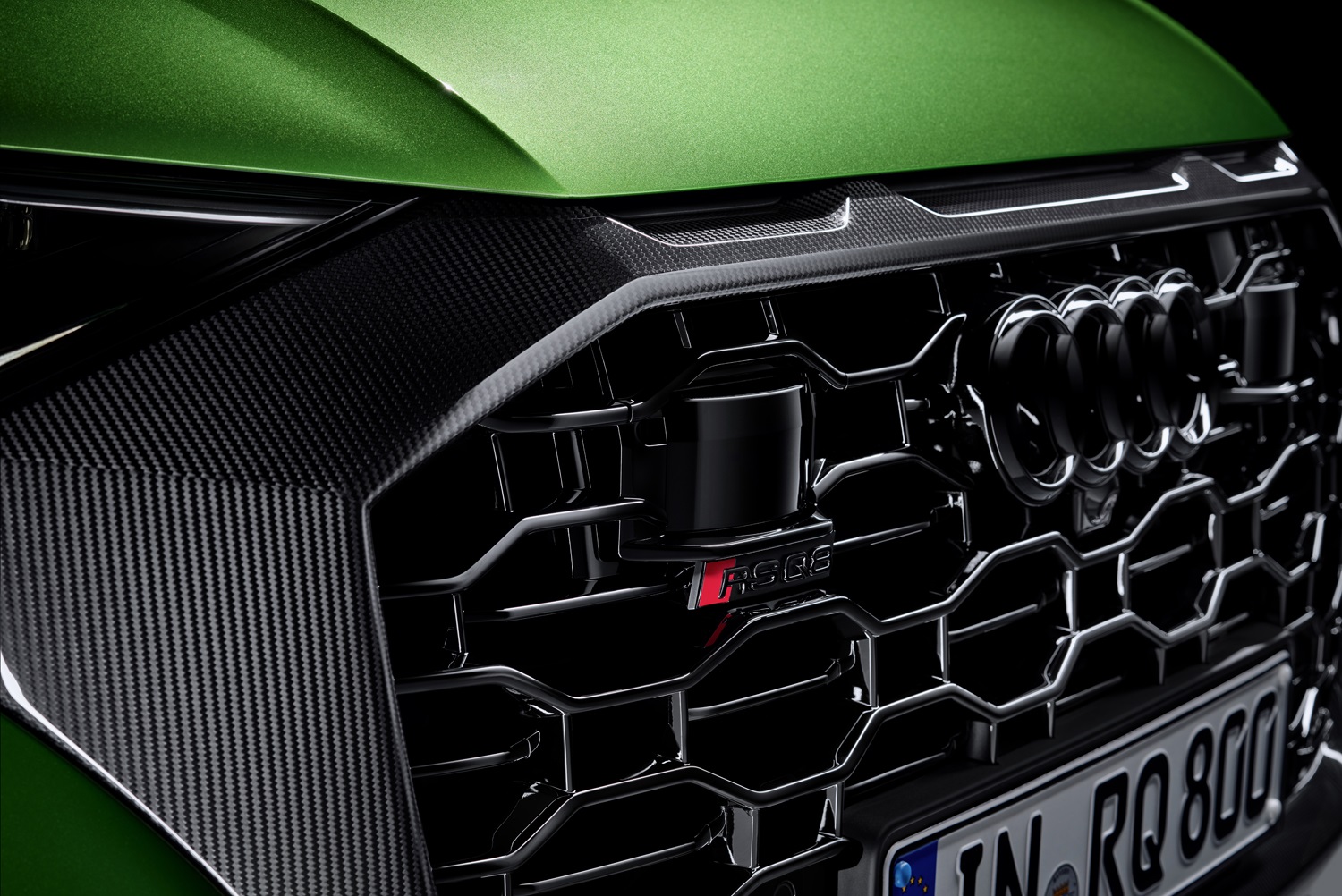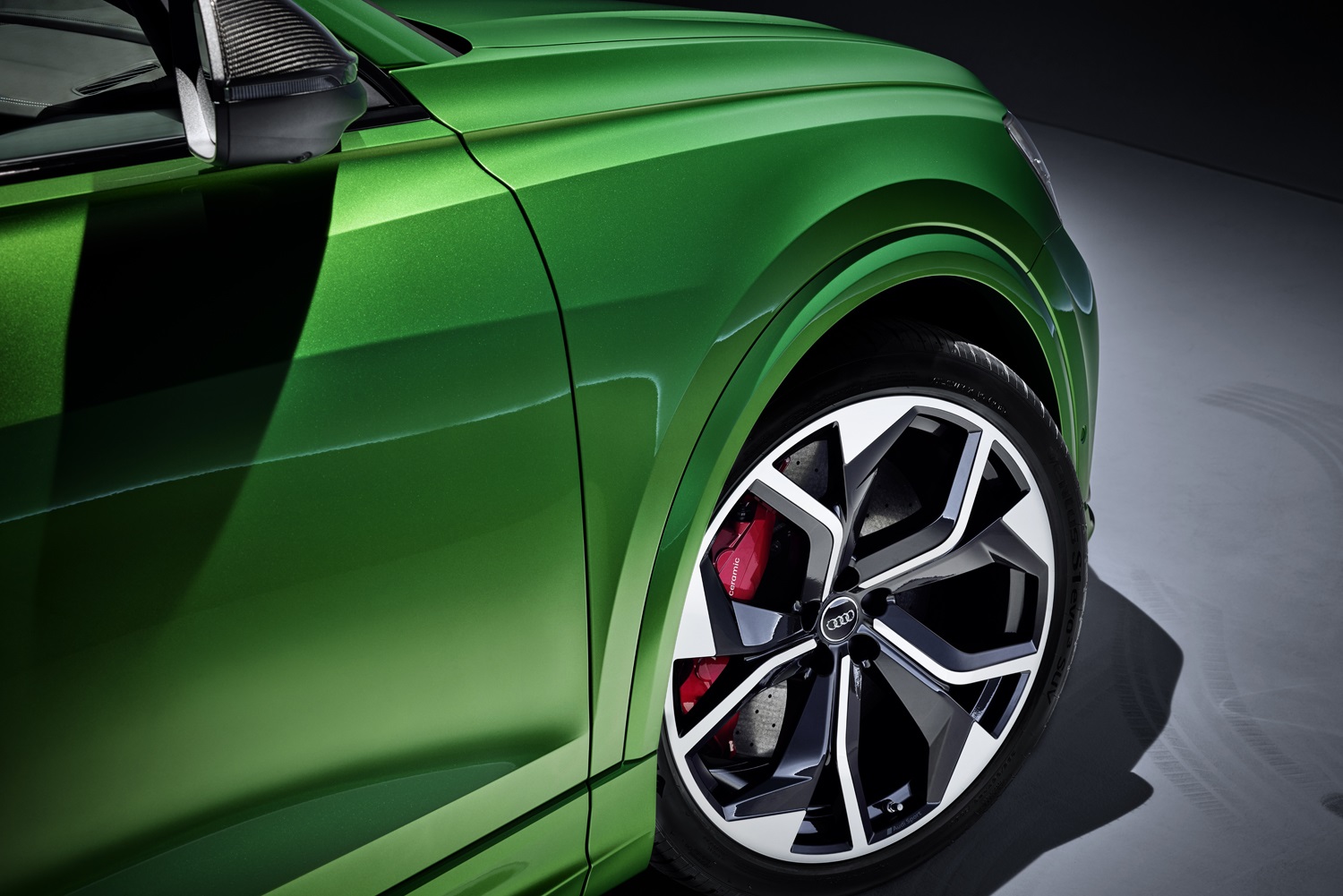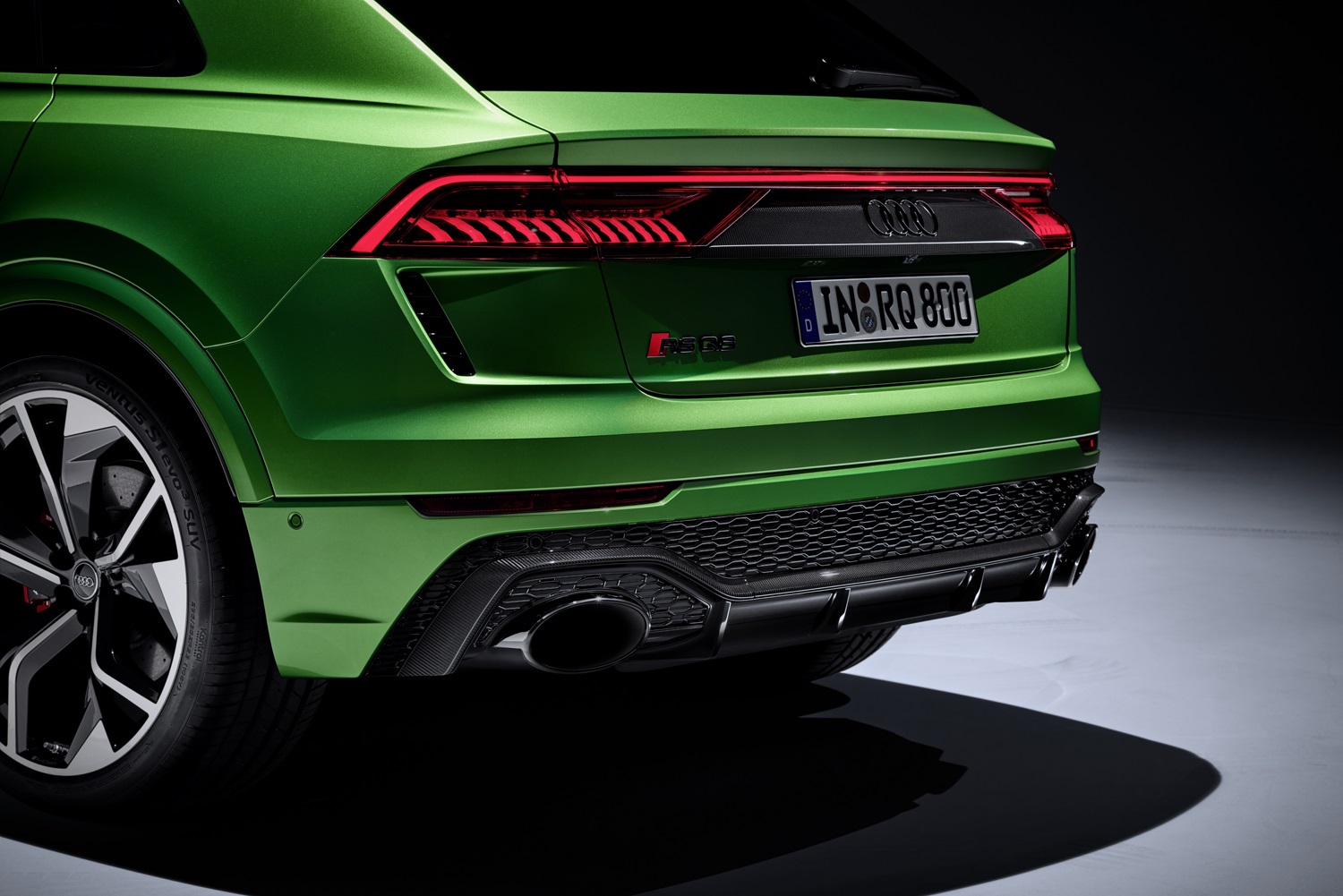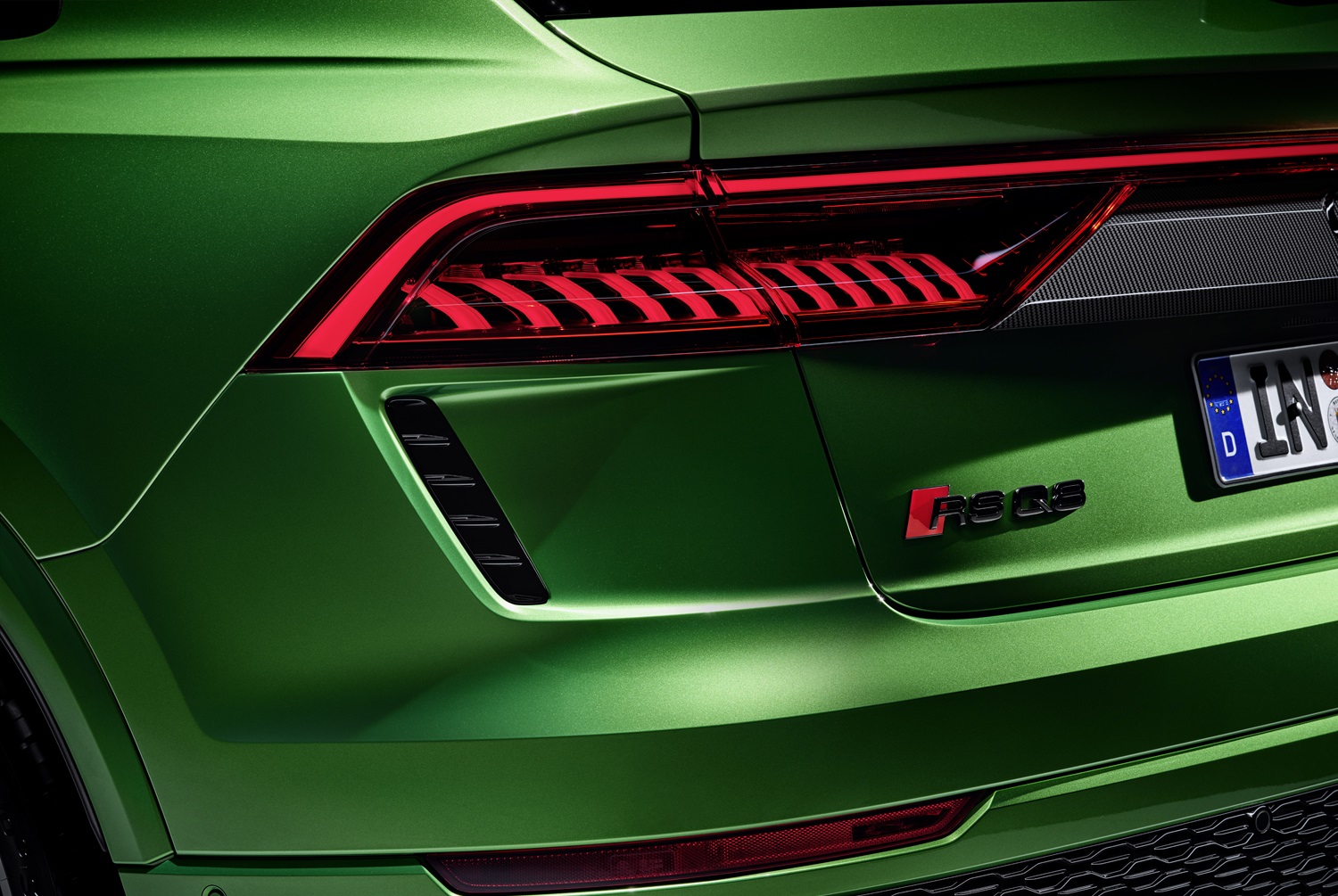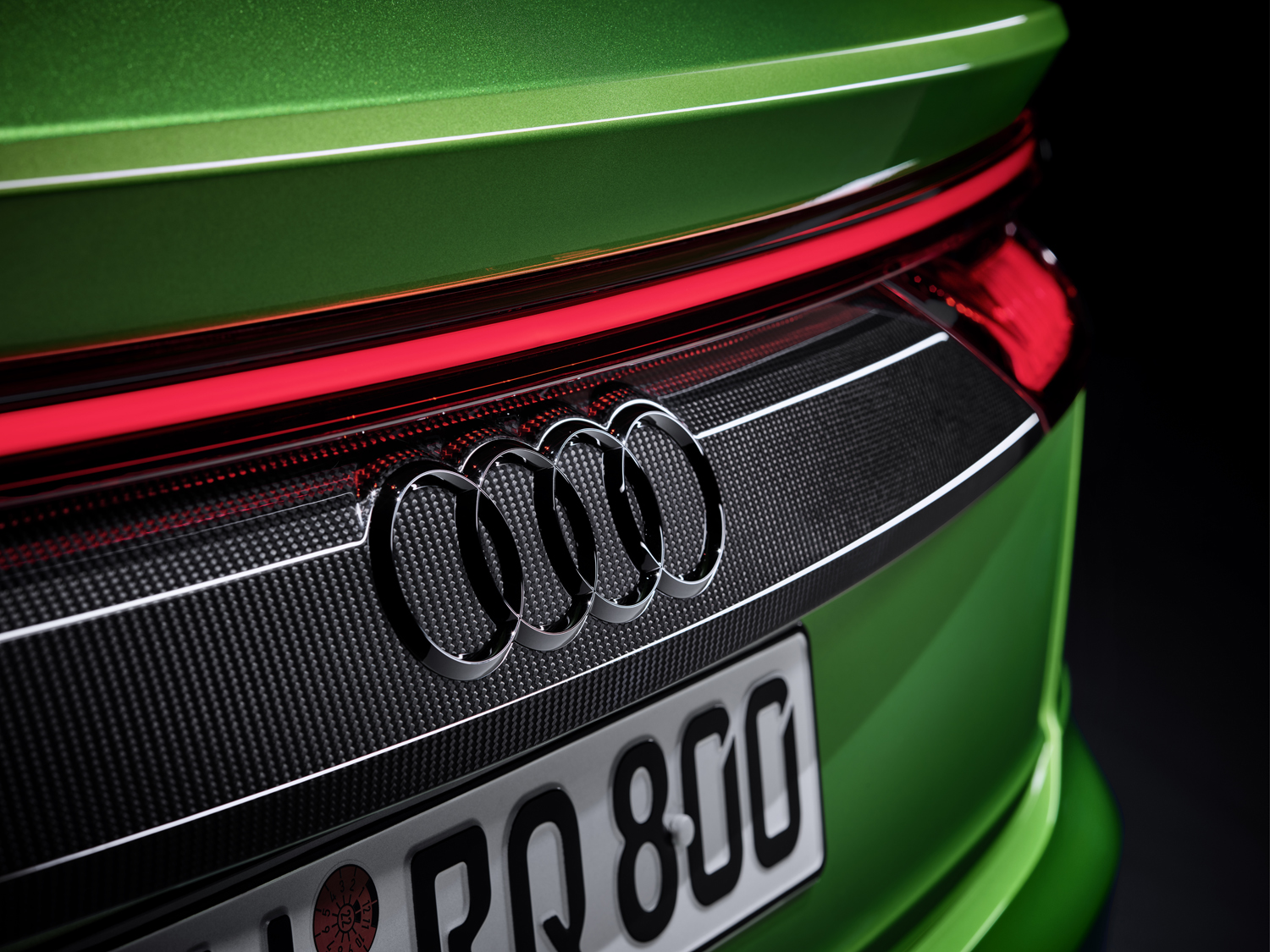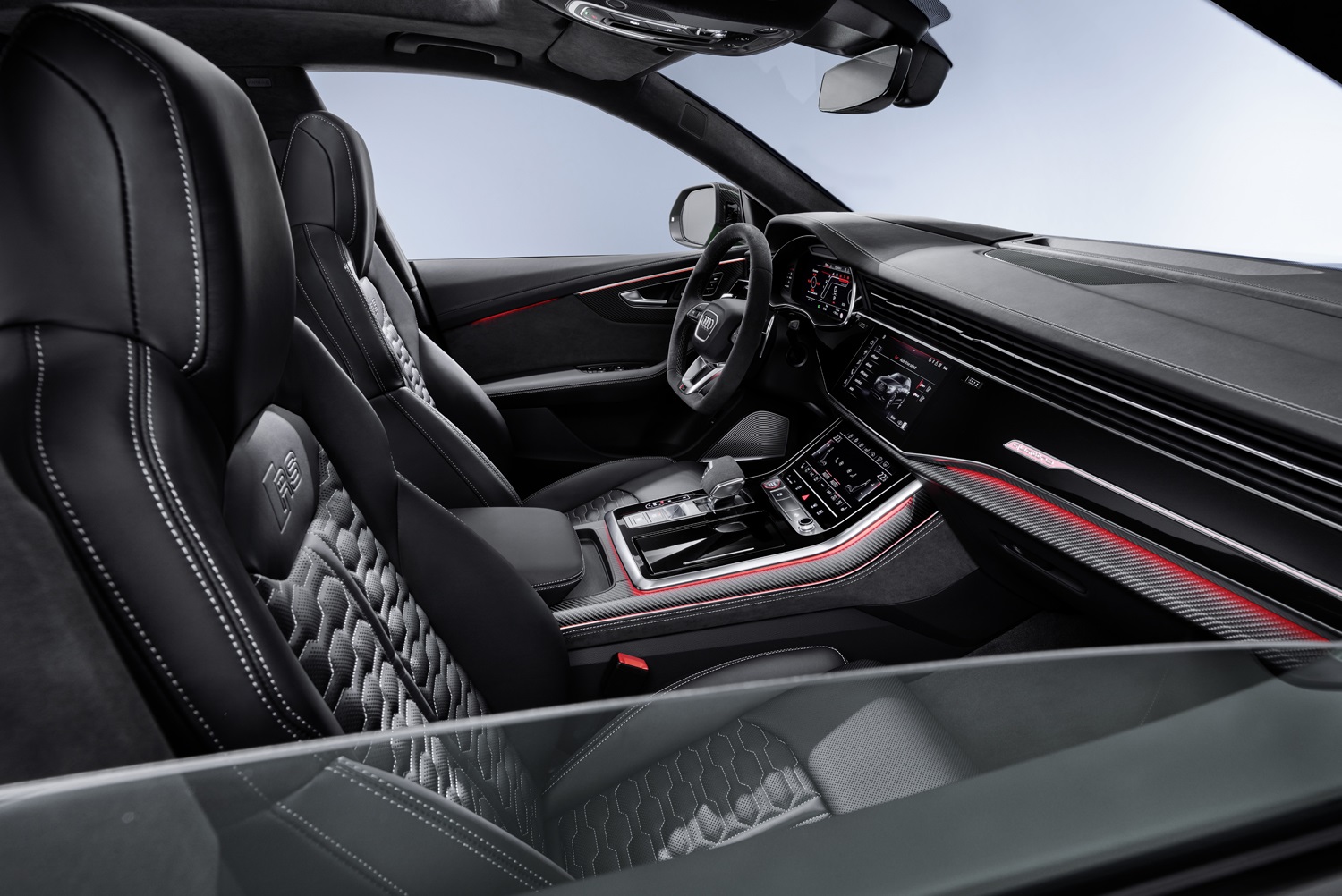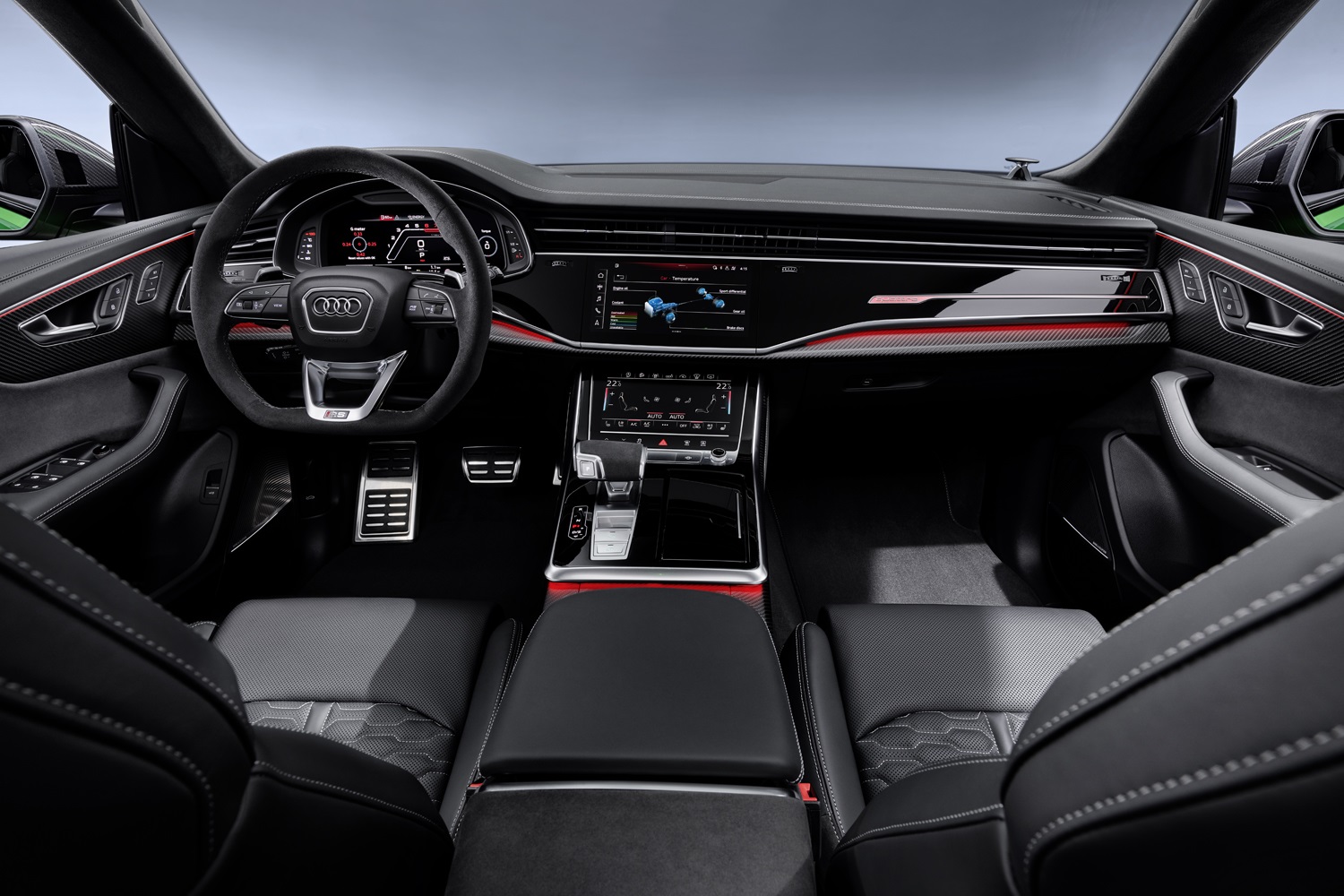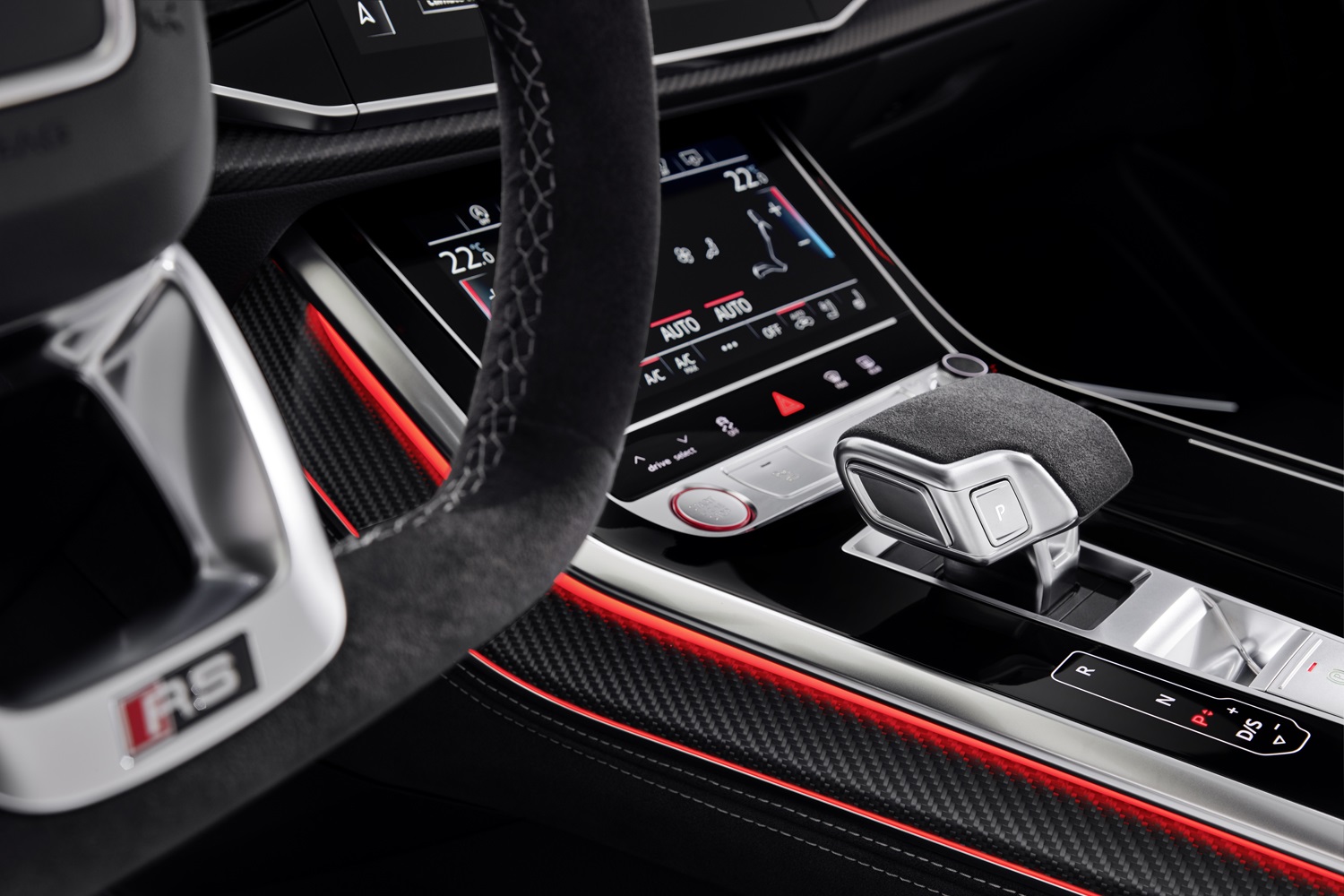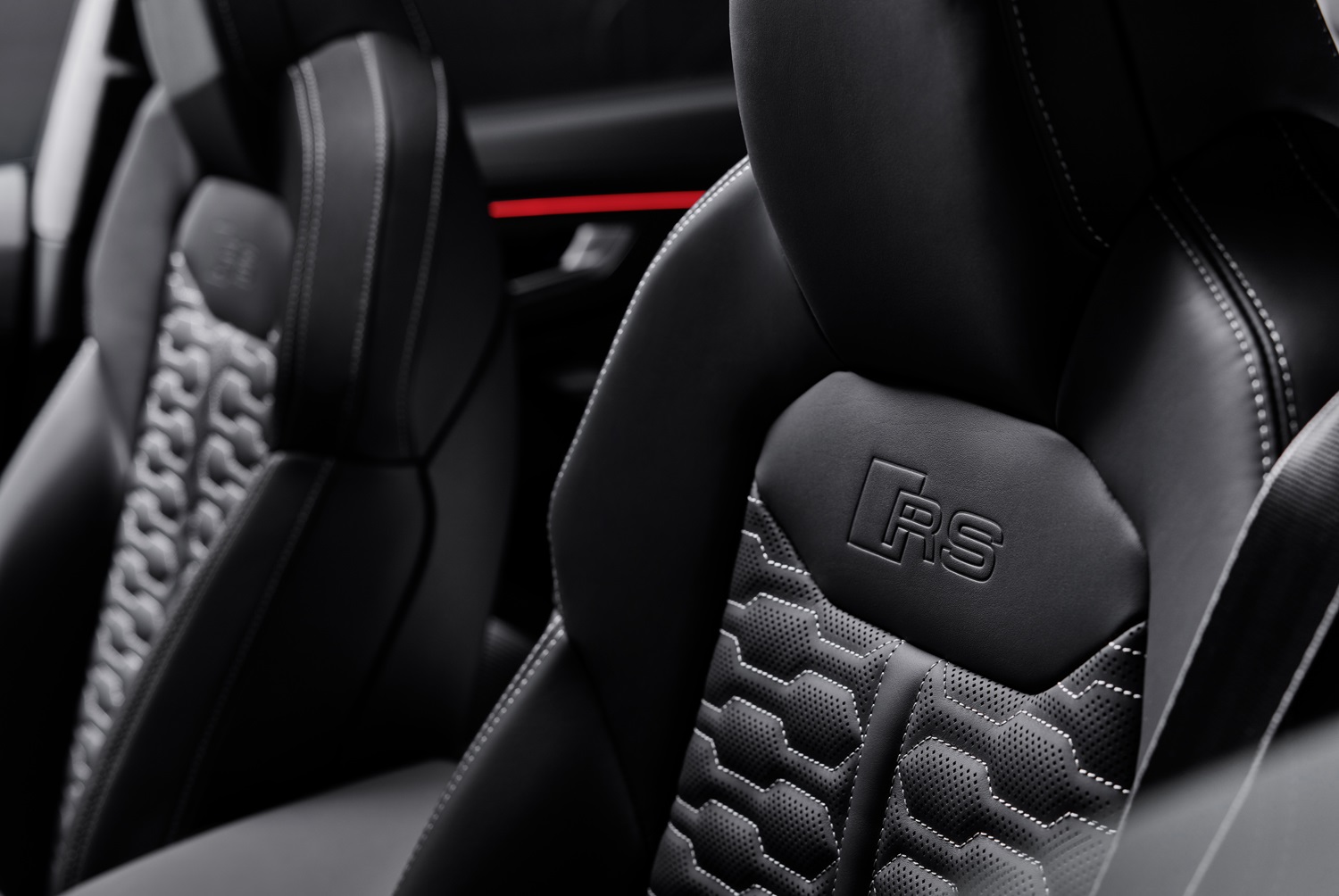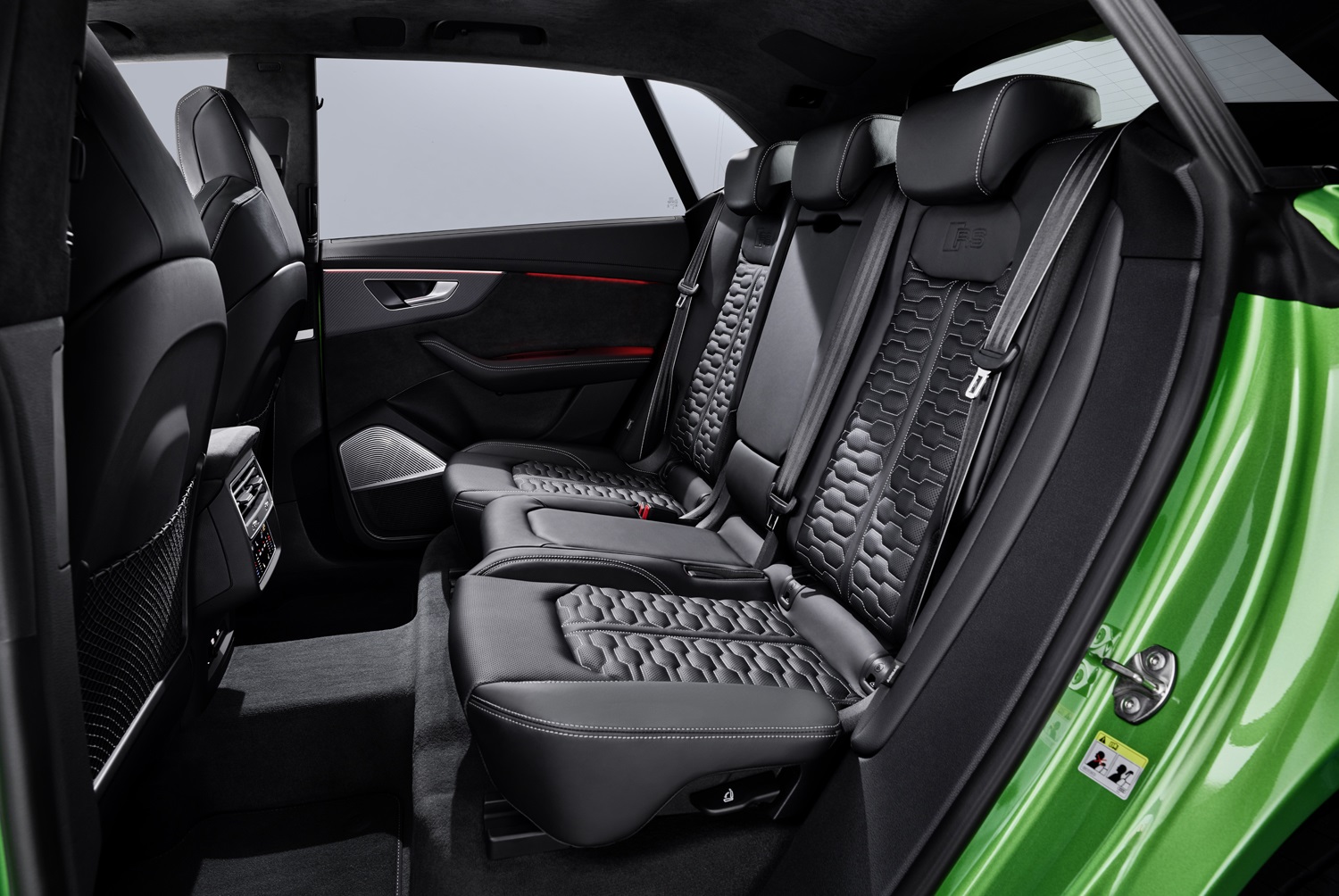Audi Sport announced plans to release six new models before the beginning of 2020, and it’s keeping its promise. The sixth and final addition to its 2019 range — unless it has a high-horsepower surprise in store — is the RS Q8, which made its debut alongside a sportier, Sportback-badged variant of the electric E-Tron SUV at the 2019 Los Angeles Auto Show.
There’s not an inch of chrome on the RS Q8’s body, and that’s intentional. Frank Lamberty, one of the SUV’s exterior designers, explained Audi Sport looked at its racing programs when it rebooted its design language, and “sports cars don’t need chrome.” This philosophy also influenced the second-generation RS 7 Sportback, and the latest RS 6 Avant.
Stylists sent the Q8‘s chrome trim back to the parts bin, and replaced it with an array of glossy black accents. The grille and the lower part of the front bumper were designed specifically for the RS-badged model, while the back end gains an air diffuser and a pair of oval-shaped exhaust tips. Its 22-inch alloy wheels are the largest Audi has ever fitted as standard.
Sport seats and a flat-bottomed steering wheel aside, the RS Q8’s interior looks a lot like the regular Q8’s until you turn on the ignition. Both come with a digital, driver-configurable instrument cluster, but the sportier variant’s has been redesigned, and it learned a few new tricks. It lets the driver time track runs, for example. The optional head-up display features RS-specific graphics, too. It puts key information (like a speedometer and a tachometer) right in the driver’s line of sight.
The excellent, dual-screen MMI Touch Response infotainment system remains. The top screen is the one used to access most of the software’s functions, like media and car settings as well as navigation. We like the ability to rearrange icons on the home screen, like on a smartphone or a tablet. The bottom screen replaces the HVAC controls to give the cabin a sleeker look, and handwriting recognition technology allows the front passengers to manually enter an address into the navigation.
Would you guess the RS Q8 is a hybrid? We wouldn’t, either, but the specifications sheet clearly lists a 48-volt mild hybrid system which works with cylinder-on-demand technology to improve the twin-turbocharged, 4.0-liter V8’s fuel economy. The electrified part of the powertrain doesn’t inject more power into the driveline, but the RS Q8 doesn’t need it. Its eight-cylinder engine delivers 600 horsepower and 590 pound-feet of torque to the four wheels via an eight-speed automatic transmission and Quattro all-wheel drive. Hitting 62 mph from a stop takes 3.8 seconds, and it happily cruises at 189 mph.
Audi will begin delivering the RS Q8 in Germany during the first quarter of 2020. The high-power SUV carries a base price of 127,000 euros, a sum which represents approximately $140,000 at the current conversion rate. Pricing and availability for the American market will be released closer to its local introduction.
Editors' Recommendations
- 2024 Audi Q8 e-tron first drive review: 300-mile luxury EV cruiser
- 2020 Nissan Sentra banishes boring styling, as well as its turbocharged engine
- What I saw at the LA Auto Show gives me hope for humanity
- Volkswagen found something fun to do with its Atlas Cross Sport family hauler
- Lincoln Corsair Grand Touring adds plug-in hybrid power

